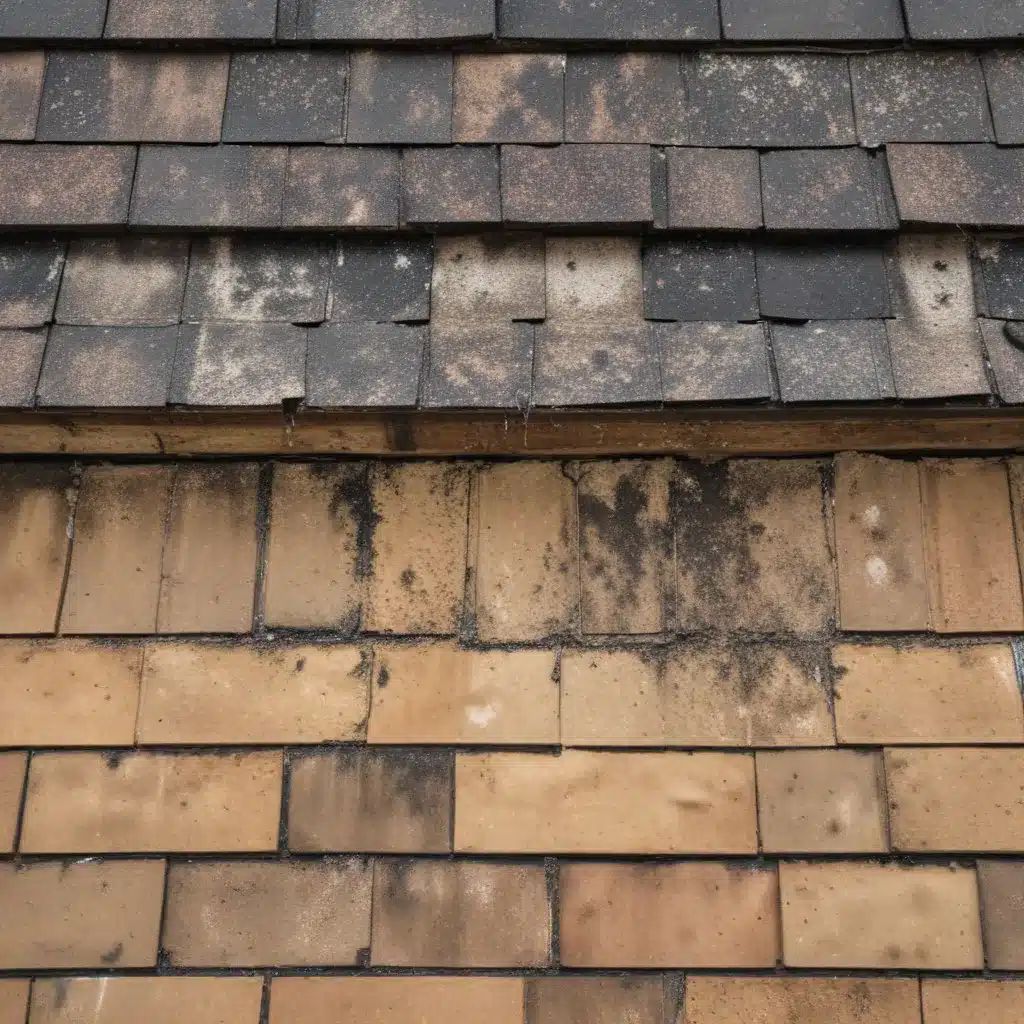
Understanding Mold: The Key Culprit
Mold is a common problem that plagues many homeowners, and it can have significant consequences if left unchecked. As a seasoned roofing professional, I understand the importance of identifying and addressing mold growth promptly to prevent further damage and potential health risks.
Molds are a type of fungus that thrive in damp, moisture-rich environments. They are found almost everywhere, including in our homes, and they play a crucial role in the natural decomposition of organic matter. However, when mold growth gets out of control, it can become a serious issue, causing structural damage and posing health hazards to occupants.
The key to controlling mold growth is to address the root cause – moisture. Mold spores are ubiquitous, meaning they are present in the air we breathe, both indoors and outdoors. When these spores land on a surface with sufficient moisture, they can start to grow and reproduce, leading to the appearance of unsightly and potentially harmful mold colonies.
Common Sources of Moisture and Mold Growth
Identifying the sources of moisture in your home is the first step in preventing and addressing mold growth. Some of the most common culprits include:
- Roof leaks: Faulty or damaged roofing materials, such as missing or cracked shingles, can allow water to penetrate the roofing system and enter the interior of the home, leading to mold growth.
- Plumbing leaks: Leaks in pipes, faucets, or appliances can create damp conditions that foster mold growth, often in hidden areas behind walls or under floors.
- Condensation: Poorly insulated or ventilated areas, such as bathrooms and attics, can experience high humidity levels, leading to condensation and the subsequent growth of mold.
- Flooding or water damage: Any event that introduces a significant amount of water into the home, such as a flood or a severe storm, can create the perfect environment for mold to thrive.
- Poor ventilation: Inadequate airflow in certain areas of the home can trap moisture and contribute to mold growth, particularly in bathrooms, kitchens, and basements.
Identifying Mold Growth
Mold can often be detected through visual inspection or by its distinctive musty odor. Common signs of mold growth include:
- Discolored or fuzzy patches on walls, ceilings, or other surfaces
- Warping or staining of materials, such as wood or drywall
- A persistent, musty smell in the air
It’s important to note that mold can sometimes be hidden, growing behind walls, under flooring, or in other concealed areas. If you suspect hidden mold, it’s best to have a professional inspection conducted to identify the extent of the problem.
Preventing and Addressing Mold Growth
Preventing mold growth is primarily about controlling moisture levels in the home. Here are some effective strategies:
-
Roof Maintenance: Regularly inspect your roof for any signs of damage or leaks, and promptly address any issues. Ensure that your roof is properly ventilated and that your gutters and downspouts are functioning correctly to divert water away from the home.
-
Plumbing Repairs: Quickly fix any leaks or drips in your plumbing system to prevent moisture buildup and the subsequent growth of mold.
-
Improve Ventilation: Ensure that your home has adequate ventilation, especially in areas prone to moisture, such as bathrooms and kitchens. Consider installing exhaust fans or opening windows to improve air circulation.
-
Dehumidify: Use a dehumidifier, particularly in damp areas of the home, to maintain optimal humidity levels (between 30-50%) and discourage mold growth.
-
Clean and Dry Water Damage Promptly: If your home experiences water damage, such as from a flood or a roof leak, it’s essential to clean and dry the affected areas as quickly as possible to prevent mold from taking hold.
-
Address Visible Mold: If you do spot mold growth, act quickly. The first step is to identify and address the source of the moisture that is feeding the mold. Once the moisture issue is resolved, you can proceed to clean the affected areas following the EPA’s guidelines on mold remediation.
Remember, it’s crucial to take appropriate safety precautions when dealing with mold, such as wearing protective gear and ensuring proper ventilation. In some cases, it may be necessary to hire a professional mold remediation contractor, especially for larger-scale mold infestations or if you or your family members have respiratory sensitivities.
The Importance of Prompt Action
Mold growth can have serious consequences if left unchecked. It can cause structural damage to your home, as well as potentially lead to health issues for the occupants. Symptoms of mold exposure can include:
- Allergic reactions, such as sneezing, runny nose, and skin rashes
- Respiratory problems, including asthma attacks
- Irritation of the eyes, nose, and throat
Therefore, it’s essential to address any signs of mold growth promptly. By identifying and addressing the root causes of moisture in your home, you can effectively prevent and control mold growth, safeguarding your property and the well-being of your family.
At Roofers in Northampton, we understand the importance of maintaining a healthy and mold-free home. Our experienced team of roofing professionals can help you inspect your roof, identify potential sources of moisture, and provide effective solutions to prevent and remediate mold growth. Contact us today to learn more about our comprehensive roofing services and how we can help you keep your home safe and mold-free.

